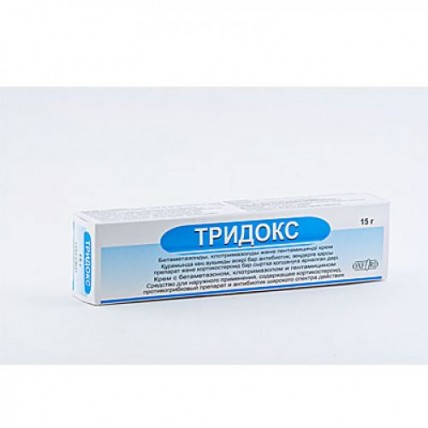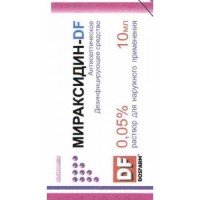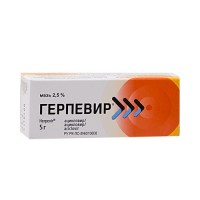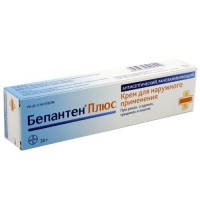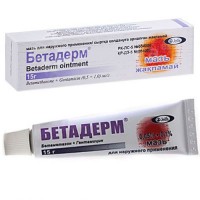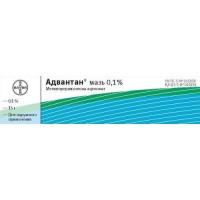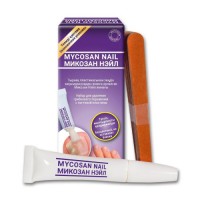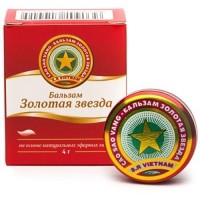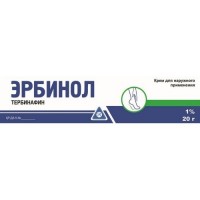The instruction
for medical use
of Tridoks Torgovoye medicine a name of Tridoks
the International unlicensed name
Is not present
the Dosage form Cream, 15 g
Structure
of 1 g of cream contain
active agents: betamethasone Dipropionas of 0.64 mg it is equivalent to betamethasone of 0.50 mg, Clotrimazolum of 10.00 mg, Gentamycini sulfas it is equivalent to gentamycin of 1.00 mg,
excipients: cetostearyl alcohol, tsetomakrogol 1000, paraffin white soft, paraffin easy liquid, propylene glycol, sodium metabisulphite, hydroxytoluene butylate, EDTA disodium salt, dinatrium hydrophosphate, sodium dihydrophosphate, glyceryl monostearate, methylparaben, propylparaben, water purified.
Description
White soft, uniform cream.
Pharmacotherapeutic group
Glucocorticosteroids for topical treatment of diseases of skin. Corticosteroids strong in a combination with other drugs.
The code of automatic telephone exchange D07XC01
the Pharmacological
Betamethasone Pharmacokinetics properties Dipropionas
Extent of absorption of betamethasone of Dipropionas at external use depends on various factors, including a means basis, integrity of an epidermal barrier, use of an occlusive bandage. Betamethasone Dipropionas is easily soaked up through a corneal layer of skin, without being exposed to biotransformation. Absorption increases when drawing by skin with the injured epidermis, by skin in the field of body folds, when drawing on the considerable surface of skin. The inflammatory processes happening in skin lead to increase in absorption of drug. Use of occlusive bandages also considerably increases absorption of drug through skin. Children have Dipropionas betamethasone absorption higher, than at adults.
At dermal absorption after external putting drug its pharmacokinetics is similar to that at system introduction of corticosteroids. Betamethasone Dipropionas is metabolized in the form of connections with glucuronic acid and removed generally by kidneys, in smaller quantity – with bile.
Clotrimazolum
Clotrimazolum has high penetration when drawing on skin. At external use of drug the concentration in epidermis is higher, than in a derma and hypodermic cellulose. Practically has no systemic action.
Gentamycini sulfas
At use on extensive sites of the injured skin (for example, in burns) drug can be soaked up, at the same time there can be system side effects. Gentamycini sulfas does not biotransformirutsya in an organism and is removed with urine in not changed look.
The pharmacodynamics
the Combined drug, renders anti-inflammatory, antiallergic, antibacterial and antifungal (fungicide) action.
Betamethasone Dipropionas – a synthetic fluorinated glucocorticosteroid (GKS). Renders anti-inflammatory, antipruritic, antiallergic, vasoconstrictive action. Drug induces synthesis of a lipokortin which leads to oppression of activity of a phospholipase of A2 and reduction of biosynthesis of mediators of inflammation and an allergy, such as prostaglandins, leukotrienes. Eliminates hyperpermeability and vasodilatation in the field of damage owing to what reduces exudative reactions. Reduces protein synthesis, collagen adjournment, oppresses proliferative processes in skin.
Clotrimazolum - antifungal means from group of derivatives of an imidazole. Has effect due to disturbance of synthesis of the ergosterol which is a component of a cellular membrane of mushrooms. Possesses a broad spectrum of activity. It is effective concerning dermatophytes, mold mushrooms, sort Candida mushrooms and also the causative agent of a chromophytosis - Malassezia furfur. It is active concerning gram-positive and gram-negative bacteria: Corynebacterium minutissimum, Streptococcus spp., Staphylococcus spp. and also concerning Trichomonas vaginalis.
Gentamycin - an antibiotic of a broad spectrum of activity from group of aminoglycosides, works bakteritsidno. Bactericidal action is caused by disturbance of permeability of a cytoplasmic membrane and oppression of synthesis of protein at the level of ribosomes. To drug gram-negative bacteria are highly sensitive: Proteus spp. (indolpositive and indolnegative), Escherichia coli, Klebsiella spp., Salmonella spp., Shigella spp., Campylobacter spp., gram-positive bacteria: Staphylococcus spp. (metitsillinorezistentny). Are sensitive: Enterococcus faecalis, Serratia spp., Pseudomonas spp., Acinetobacter spp., Citrobacter spp. Rezistentna: Neisseria meningitidis, Treponema pallidum, Streptococcus spp. (except Streptococcus pneumoniae), Providencia rettgeri.
Indications
- simple contact and allergic dermatitis (especially complicated by consecutive bacterial infection)
- atopic dermatitis, eczema
- dermatomycoses (dermatofitiya, candidiasis, multi-colored (scaly) deprive), especially at localization in inguinal area and large folds of skin
- idle time chronic deprive
- seborrheal dermatitis
- the dermatosis which is giving in to therapy by glucocorticosteroids
- psoriasis
the Route of administration and doses
Adults and children is more senior than 7 years
a Small amount of cream apply on affected areas of skin, slightly rubbing, 2 times a day. Duration of treatment is defined individually by the doctor and depends on a nosological form and disease severity. It is not necessary to use drug under an occlusive bandage and also to carry out treatment without interruption more than 2 weeks, between repeated courses the break is necessary not less than 20 days. In a dermatomycosis of feet the average duration of treatment - 2-4 weeks.
The course of treatment at children and patients with damage of a face has to make no more than 5 days.
Side effects
- an itching, burning, irritation
- xeroderma, a folliculitis, a hypertrichosis, steroid eels, hypo - or a hyperpegmentation
- allergic reactions
- perioral dermatitis, teleangiectasias
- maceration, infection, an atrophy of skin, a striya, heat rashes (at use of occlusive bandages)
At long treatment or drawing on a big surface the development of system side effects is possible:
- increase in body weight, osteoporosis, increase in the ABP, hypostases, a hyperglycemia,
- an ulceration of a mucous membrane of digestive tract
- aggravation of the hidden centers of an infection
- excitement, insomnia
- oppression of a hypophysial and adrenal system, a dysmenorrhea
- ototoksichesky action
of the Contraindication
- hypersensitivity to drug components
- a tuberculosis cutis, skin manifestations of syphilis
- chicken pox, a herpes simplex and other viral diseases of skin
- skin vaccine-challenged reactions
- open wounds
- phlebitis, trophic ulcers
- skin new growths
- pink and youthful eels
- diabetes
- glaucoma, a cataract
- children's age up to 7 years
Medicinal interactions
Strengthens action of immunodepressants, reduces effect of immunoperformance-enhancing drugs.
The special
instructions Drug it is not intended for use in ophthalmology.
It is necessary to avoid hit of drug in eyes.
It is necessary to avoid prolonged use of drug as at the same time the frequency of emergence of side effect increases and development of resistance of microorganisms is possible. At emergence of steady bacterial or fungal microflora it is necessary to cancel drug and to appoint the corresponding treatment.
It is not necessary to use drug on face skin, in connection with a possibility of appearance of teleangiectasias, perioral dermatitis. On skin in axillary and inguinal area drug should be used only in urgent cases. It is not necessary to use drug under an occlusive bandage. With care it is necessary to apply at an atrophy of hypodermic cellulose, especially at elderly people. Reversible suppression of function of a hypophysial and adrenal system and also symptoms of insufficiency of bark of adrenal glands after drug withdrawal can result from system absorption.
Pregnancy and the period of a lactation
Use of the drug Tridoks during pregnancy is possible only when the expected advantage for mother exceeds potential risk for a fruit. It is unknown whether drug components with breast milk are allocated. Therefore when prescribing the drug Tridoks in the period of a lactation it is necessary to resolve an issue of the breastfeeding termination.
Use in pediatrics
At children perhaps more frequent emergence of signs of oppression gipotalamo - a hypophysial and adrenal system when using local glucocorticosteroids, than at adult patients that is connected with the increased absorption because of a bigger ratio of surface area of skin to body weight.
To children and teenagers 7 years drug are more senior appoint only according to strict indications and under control of the doctor as development of system side effects is possible. System absorption of glucocorticosteroids or gentamycin at external use will be higher if treatment is carried out on big body surfaces or when using occlusive bandages. In such cases, especially at children and teenagers, treatment should be carried out on stringent control of the doctor.
Influence on ability to run the vehicle or potentially dangerous mechanisms
Data on an adverse effect of drug on ability to run the vehicle or potentially dangerous mechanisms are absent.
Overdose
Symptoms: arterial hypertension, accession of consecutive infections, Cushing's syndrome, after prolonged use on the extensive surface of skin are possible the hypercorticoidism phenomena.
Treatment: gradual drug withdrawal, if necessary - correction of electrolytic disturbances, symptomatic therapy.
A form of release and packing
On 15 g of cream in an aluminum tuba.
On 1 tuba together with the instruction for medical use in the state and Russian languages put in a pack from cardboard.
To Store storage conditions at a temperature not over 25 ºС.
To store out of children's reach!
3 years
not to apply a period of storage after an expiration date.
Prescription status
According to the prescription
Laboratories Pvt. Ltd OXFORD Oxford Producer
India, Mumbai
the Address of the organization accepting in the territory of the Republic of Kazakhstan claims from consumers on quality of products (goods)
Representative office Oxford of Laboratories Pvt. Ltd
Almaty, Auezov St. 3
Ph./fax + 7 727 266 95 50
E-mail:
To develop almatyoxford@hotmail.com
for medical use
of Tridoks Torgovoye medicine a name of Tridoks
the International unlicensed name
Is not present
the Dosage form Cream, 15 g
Structure
of 1 g of cream contain
active agents: betamethasone Dipropionas of 0.64 mg it is equivalent to betamethasone of 0.50 mg, Clotrimazolum of 10.00 mg, Gentamycini sulfas it is equivalent to gentamycin of 1.00 mg,
excipients: cetostearyl alcohol, tsetomakrogol 1000, paraffin white soft, paraffin easy liquid, propylene glycol, sodium metabisulphite, hydroxytoluene butylate, EDTA disodium salt, dinatrium hydrophosphate, sodium dihydrophosphate, glyceryl monostearate, methylparaben, propylparaben, water purified.
Description
White soft, uniform cream.
Pharmacotherapeutic group
Glucocorticosteroids for topical treatment of diseases of skin. Corticosteroids strong in a combination with other drugs.
The code of automatic telephone exchange D07XC01
the Pharmacological
Betamethasone Pharmacokinetics properties Dipropionas
Extent of absorption of betamethasone of Dipropionas at external use depends on various factors, including a means basis, integrity of an epidermal barrier, use of an occlusive bandage. Betamethasone Dipropionas is easily soaked up through a corneal layer of skin, without being exposed to biotransformation. Absorption increases when drawing by skin with the injured epidermis, by skin in the field of body folds, when drawing on the considerable surface of skin. The inflammatory processes happening in skin lead to increase in absorption of drug. Use of occlusive bandages also considerably increases absorption of drug through skin. Children have Dipropionas betamethasone absorption higher, than at adults.
At dermal absorption after external putting drug its pharmacokinetics is similar to that at system introduction of corticosteroids. Betamethasone Dipropionas is metabolized in the form of connections with glucuronic acid and removed generally by kidneys, in smaller quantity – with bile.
Clotrimazolum
Clotrimazolum has high penetration when drawing on skin. At external use of drug the concentration in epidermis is higher, than in a derma and hypodermic cellulose. Practically has no systemic action.
Gentamycini sulfas
At use on extensive sites of the injured skin (for example, in burns) drug can be soaked up, at the same time there can be system side effects. Gentamycini sulfas does not biotransformirutsya in an organism and is removed with urine in not changed look.
The pharmacodynamics
the Combined drug, renders anti-inflammatory, antiallergic, antibacterial and antifungal (fungicide) action.
Betamethasone Dipropionas – a synthetic fluorinated glucocorticosteroid (GKS). Renders anti-inflammatory, antipruritic, antiallergic, vasoconstrictive action. Drug induces synthesis of a lipokortin which leads to oppression of activity of a phospholipase of A2 and reduction of biosynthesis of mediators of inflammation and an allergy, such as prostaglandins, leukotrienes. Eliminates hyperpermeability and vasodilatation in the field of damage owing to what reduces exudative reactions. Reduces protein synthesis, collagen adjournment, oppresses proliferative processes in skin.
Clotrimazolum - antifungal means from group of derivatives of an imidazole. Has effect due to disturbance of synthesis of the ergosterol which is a component of a cellular membrane of mushrooms. Possesses a broad spectrum of activity. It is effective concerning dermatophytes, mold mushrooms, sort Candida mushrooms and also the causative agent of a chromophytosis - Malassezia furfur. It is active concerning gram-positive and gram-negative bacteria: Corynebacterium minutissimum, Streptococcus spp., Staphylococcus spp. and also concerning Trichomonas vaginalis.
Gentamycin - an antibiotic of a broad spectrum of activity from group of aminoglycosides, works bakteritsidno. Bactericidal action is caused by disturbance of permeability of a cytoplasmic membrane and oppression of synthesis of protein at the level of ribosomes. To drug gram-negative bacteria are highly sensitive: Proteus spp. (indolpositive and indolnegative), Escherichia coli, Klebsiella spp., Salmonella spp., Shigella spp., Campylobacter spp., gram-positive bacteria: Staphylococcus spp. (metitsillinorezistentny). Are sensitive: Enterococcus faecalis, Serratia spp., Pseudomonas spp., Acinetobacter spp., Citrobacter spp. Rezistentna: Neisseria meningitidis, Treponema pallidum, Streptococcus spp. (except Streptococcus pneumoniae), Providencia rettgeri.
Indications
- simple contact and allergic dermatitis (especially complicated by consecutive bacterial infection)
- atopic dermatitis, eczema
- dermatomycoses (dermatofitiya, candidiasis, multi-colored (scaly) deprive), especially at localization in inguinal area and large folds of skin
- idle time chronic deprive
- seborrheal dermatitis
- the dermatosis which is giving in to therapy by glucocorticosteroids
- psoriasis
the Route of administration and doses
Adults and children is more senior than 7 years
a Small amount of cream apply on affected areas of skin, slightly rubbing, 2 times a day. Duration of treatment is defined individually by the doctor and depends on a nosological form and disease severity. It is not necessary to use drug under an occlusive bandage and also to carry out treatment without interruption more than 2 weeks, between repeated courses the break is necessary not less than 20 days. In a dermatomycosis of feet the average duration of treatment - 2-4 weeks.
The course of treatment at children and patients with damage of a face has to make no more than 5 days.
Side effects
- an itching, burning, irritation
- xeroderma, a folliculitis, a hypertrichosis, steroid eels, hypo - or a hyperpegmentation
- allergic reactions
- perioral dermatitis, teleangiectasias
- maceration, infection, an atrophy of skin, a striya, heat rashes (at use of occlusive bandages)
At long treatment or drawing on a big surface the development of system side effects is possible:
- increase in body weight, osteoporosis, increase in the ABP, hypostases, a hyperglycemia,
- an ulceration of a mucous membrane of digestive tract
- aggravation of the hidden centers of an infection
- excitement, insomnia
- oppression of a hypophysial and adrenal system, a dysmenorrhea
- ototoksichesky action
of the Contraindication
- hypersensitivity to drug components
- a tuberculosis cutis, skin manifestations of syphilis
- chicken pox, a herpes simplex and other viral diseases of skin
- skin vaccine-challenged reactions
- open wounds
- phlebitis, trophic ulcers
- skin new growths
- pink and youthful eels
- diabetes
- glaucoma, a cataract
- children's age up to 7 years
Medicinal interactions
Strengthens action of immunodepressants, reduces effect of immunoperformance-enhancing drugs.
The special
instructions Drug it is not intended for use in ophthalmology.
It is necessary to avoid hit of drug in eyes.
It is necessary to avoid prolonged use of drug as at the same time the frequency of emergence of side effect increases and development of resistance of microorganisms is possible. At emergence of steady bacterial or fungal microflora it is necessary to cancel drug and to appoint the corresponding treatment.
It is not necessary to use drug on face skin, in connection with a possibility of appearance of teleangiectasias, perioral dermatitis. On skin in axillary and inguinal area drug should be used only in urgent cases. It is not necessary to use drug under an occlusive bandage. With care it is necessary to apply at an atrophy of hypodermic cellulose, especially at elderly people. Reversible suppression of function of a hypophysial and adrenal system and also symptoms of insufficiency of bark of adrenal glands after drug withdrawal can result from system absorption.
Pregnancy and the period of a lactation
Use of the drug Tridoks during pregnancy is possible only when the expected advantage for mother exceeds potential risk for a fruit. It is unknown whether drug components with breast milk are allocated. Therefore when prescribing the drug Tridoks in the period of a lactation it is necessary to resolve an issue of the breastfeeding termination.
Use in pediatrics
At children perhaps more frequent emergence of signs of oppression gipotalamo - a hypophysial and adrenal system when using local glucocorticosteroids, than at adult patients that is connected with the increased absorption because of a bigger ratio of surface area of skin to body weight.
To children and teenagers 7 years drug are more senior appoint only according to strict indications and under control of the doctor as development of system side effects is possible. System absorption of glucocorticosteroids or gentamycin at external use will be higher if treatment is carried out on big body surfaces or when using occlusive bandages. In such cases, especially at children and teenagers, treatment should be carried out on stringent control of the doctor.
Influence on ability to run the vehicle or potentially dangerous mechanisms
Data on an adverse effect of drug on ability to run the vehicle or potentially dangerous mechanisms are absent.
Overdose
Symptoms: arterial hypertension, accession of consecutive infections, Cushing's syndrome, after prolonged use on the extensive surface of skin are possible the hypercorticoidism phenomena.
Treatment: gradual drug withdrawal, if necessary - correction of electrolytic disturbances, symptomatic therapy.
A form of release and packing
On 15 g of cream in an aluminum tuba.
On 1 tuba together with the instruction for medical use in the state and Russian languages put in a pack from cardboard.
To Store storage conditions at a temperature not over 25 ºС.
To store out of children's reach!
3 years
not to apply a period of storage after an expiration date.
Prescription status
According to the prescription
Laboratories Pvt. Ltd OXFORD Oxford Producer
India, Mumbai
the Address of the organization accepting in the territory of the Republic of Kazakhstan claims from consumers on quality of products (goods)
Representative office Oxford of Laboratories Pvt. Ltd
Almaty, Auezov St. 3
Ph./fax + 7 727 266 95 50
E-mail:
To develop almatyoxford@hotmail.com
